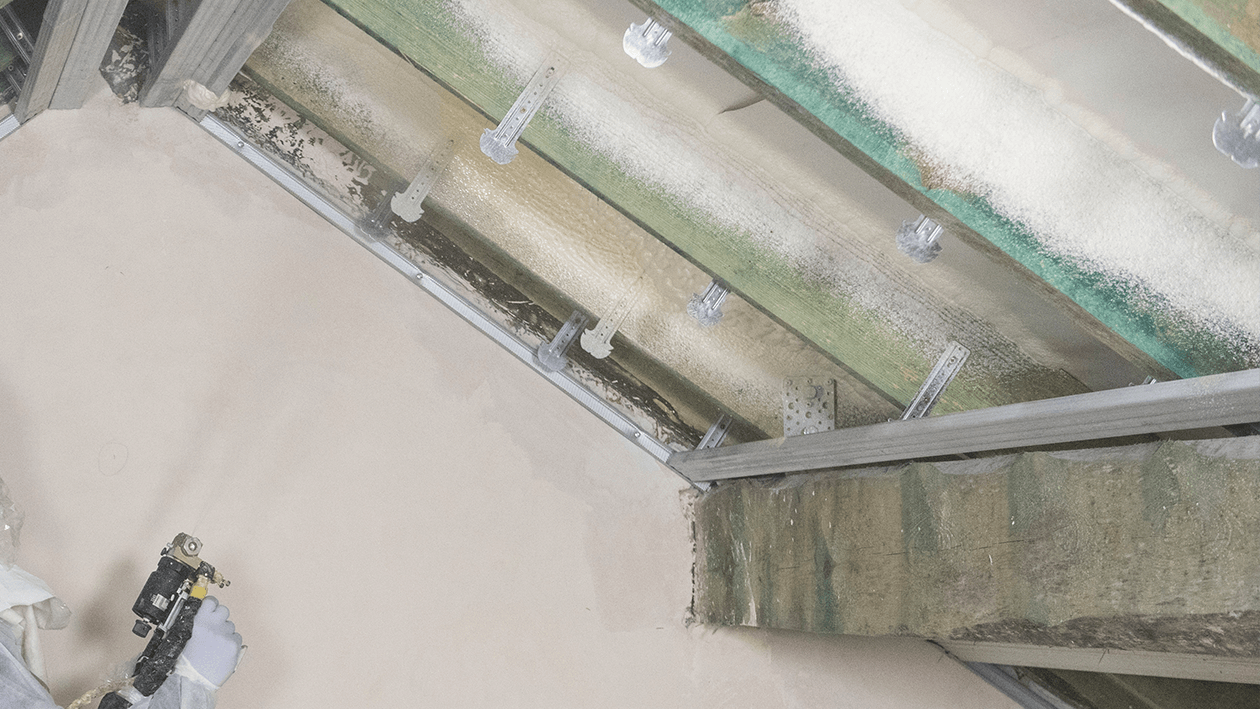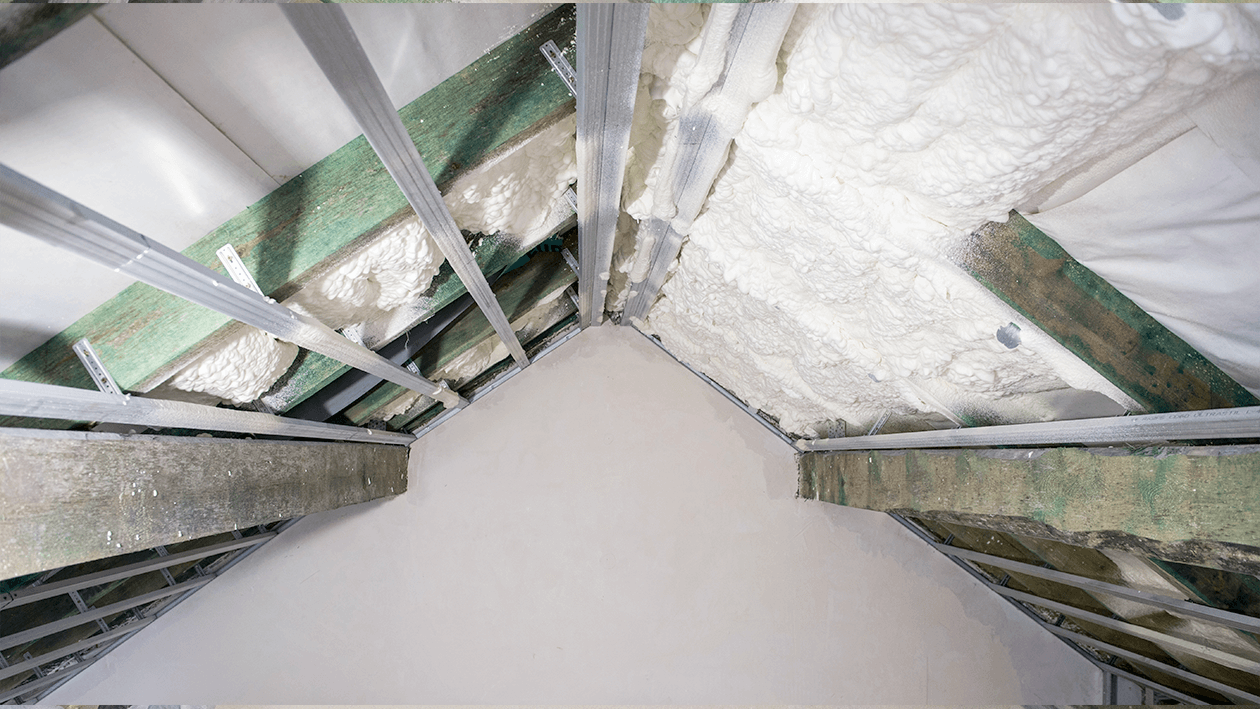Attic insulation with foam – firm savings!
When planning attic insulation you should consider material durability and energy efficiency. The open-cell polyurethane foam fully meets those criteria. Due to vapour permeability, it is used for residential building attic, ceiling and wall insulation.
Do you know poor insulation type or incorrect thermal insulation can increase heating bills in winter even by 30%? Foam can contribute to significant room heating up to 50% of previous costs.
Thermal insulation of a 150 m2 attic with a layer of open-cell foam of 20 cm thickness can provide significant savings. The attic foam thermal insulation not only meets the highest standards, but also reduces costs by several percent!
Attic insulation with polyurethane foam – advantages
There are many advantages of attic foam insulation. You can find 6 key advantages of this heat insulator below:
- 1. Perfect for winter and summer
A properly heat-insulated house should be cosy during winter as well as in summer. The foam protects against heat loss in winter, and the tight insulation provides comfort in summer, retaining cooler air in the building.
- 2. Safe to use
Foam insulation has no negative health consequences for the householders, as it doesn't generate toxins and strange smells.
- 3. Cost-effective
Attic insulation with foam is more cost-effective than the traditional methods. A 5-centimetre layer of open-cell foam appears to equal a 10-centimetre layer of styrofoam. It allows to save space when you makeover a low ceiling attic.
- 4. Vapour permeable
Vapour permeability allows the foam to eliminate water vapour condensation. It fills all spaces and provides a uniform, continuous layer of insulation, so there are no thermal bridges in rooms insulated with those materials.
- 5. Durable
The foam preserves its properties for years. It's resistant to such factors as: heat, humidity or a period of use.
- 6. Hearing protection
In rooms insulated with foam, bothersome noises like loud music or pattering rain can't be heard. 10 cm of foam spray reduces up to 55 dB!
Attic insulation with foam – how and when to use?
 Application of polyurethane foam insulation the operation itself is quite easy, if carried out by experienced experts. The foam is sprayed using a special spray gun which will apply pressurised foam on the element to be insulated. Next the material doubles its size and gains performance very quickly. Workers should wear protective clothing and oxygen masks.
Application of polyurethane foam insulation the operation itself is quite easy, if carried out by experienced experts. The foam is sprayed using a special spray gun which will apply pressurised foam on the element to be insulated. Next the material doubles its size and gains performance very quickly. Workers should wear protective clothing and oxygen masks.
An open-cell type of foam is mainly used in attics due to its price. The minimal layer applied to individual attic elements should have approx. 20 cm (usually it's 18 cm). It is worth remembering, the insulation thickness depends on many factors, like design assumptions or the expected insulation efficiency.
Before you apply the foam insulation in your attic, you should check the wood humidity. It is important, because if the humidity indicator shows 12%, you should withhold your works. In this case, you should dry the attic using for example furnaces in the first place, and then proceed with the makeover.
When insulating your attic with foam you should make sure it covers the entire area required. Secure especially areas of window frames due to the difficulty to remove the foam after its networking.
Attic insulation – price
The cost of the entire operation is affected by the complexity of the roof, cost of workmanship, the price of materials and the total surface to be insulated. You should be aware it may be difficult to precisely calculate the attic area. The surface to be insulated does not equal the surface of the upper storey, so you should include the dimensions of ceilings and all chamfers in your calculations. Remember to add the volume of the foam which has arisen in all gaps and unevenness of the insulated surface to your calculations.

 This website uses cookies. By using this website, you consent to the use of cookies in accordance with your browser settings.
This website uses cookies. By using this website, you consent to the use of cookies in accordance with your browser settings.